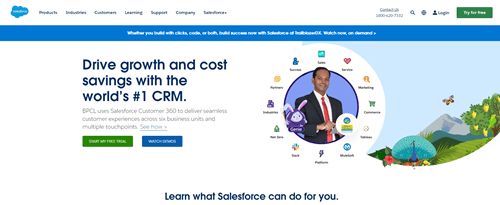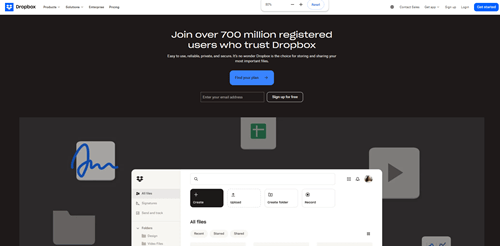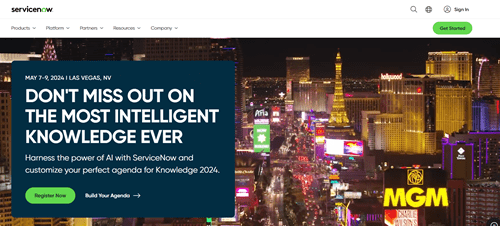
Unveiling Profitability: A SaaS Revenue Model Demystified
In the ever-evolving software landscape, the Software as a Service (SaaS) revenue model has emerged as a game-changer, transforming the way businesses deliver and monetize their software solutions. This innovative approach has disrupted traditional software licensing models, offering companies a more flexible, scalable, and recurring revenue stream. As the SaaS market continues to grow, understanding the intricacies of the SaaS revenue model has become essential for businesses seeking to capitalize on this lucrative opportunity.
What Is The SaaS Revenue Model?
The SaaS revenue model epitomizes a subscription-based pricing framework, wherein clients commit to a recurring fee, typically monthly or yearly. This fee grants them access to and utilization of a software application hosted on the provider’s servers. In stark contrast to conventional software licensing paradigms, where purchasers procure a perpetual license outright, SaaS extends the convenience of accessing software via the Internet, thereby preventing the necessity for cumbersome installations and upkeep.
Subscription-Based Pricing Structure:
Customers subscribe to a recurring fee, either monthly or annually, for utilizing a software application domiciled on the provider’s servers. This model dispenses with the need for hefty upfront investments and facilitates hassle-free deployment and accessibility through web browsers or designated applications.
Scalability and Flexibility:
The SaaS framework embodies scalability, allowing enterprises the flexibility to tailor their subscription plans commensurate with evolving exigencies. Clients can seamlessly expand their user base or unlock additional features, optimizing resource utilization and cost-effectiveness.
Continuous Innovation and Improvement:
Centralized software hosting facilitates the seamless dissemination of updates, patches, and novel features to all users. This ensures clients perennially benefit from the latest enhancements, augmenting overall user satisfaction and experience.
Win-Win Scenario:
The SaaS revenue model engenders a symbiotic relationship wherein providers garner a steady, predictable revenue stream. Simultaneously, clientele reap the rewards of economical, adaptable, and perpetually updated software solutions tailored to accommodate their dynamic requisites.
Why Is The SaaS Revenue Model So Popular?
The SaaS revenue model has gained immense popularity due to several key advantages:
Recurring Revenue:
SaaS companies enjoy a steady influx of recurring revenue, creating a dependable and scalable income stream.
Lower Upfront Costs:
Clients can utilize the software without significant initial expenses, enhancing accessibility and affordability.
Automatic Updates:
SaaS providers manage software updates and maintenance, ensuring users constantly access the latest features and improvements effortlessly.
Flexible Scalability:
SaaS solutions effortlessly adjust to accommodate fluctuating customer requirements, offering flexibility and cost-effectiveness.
Remote Access:
With internet connectivity, users can access the software anywhere, promoting mobility and seamless collaboration.
Components Of The SaaS Revenue Model:
Subscription Revenue:
This serves as the cornerstone of the SaaS revenue model, emanating from recurrent subscriptions granting customers access to the SaaS application. The predictability and consistency of this revenue stream empower companies to forecast and strategize effectively for future expansion.
Usage-Based Fees:
Alongside subscription revenue, SaaS companies often derive income from usage-based fees. These charges are tethered to the extent of platform resource utilization, encompassing factors like data storage, bandwidth usage, or API calls. This adaptable pricing mechanism ensures that customers pay commensurate with their usage, aligning costs with the value received.
Professional Services:
SaaS providers extend a spectrum of professional services to enrich the customer experience and cultivate additional revenue streams. These offerings encompass consulting, implementation support, training programs, and ongoing technical assistance. By furnishing expertise and guidance, companies foster deeper customer relationships and broaden revenue horizons beyond the core subscription model.
Add-On Products:
Complementing their core offering, SaaS companies frequently introduce supplementary products or services. These may encompass integrations with other software platforms, premium features or modules, or managed services such as dedicated support or advanced analytics. Diversifying their product portfolio enables companies to cater to a wider spectrum of customer requisites and seize additional revenue opportunities.
Types Of SaaS Sales Approaches:
Self-Service:
This approach enables customers to independently sign up and utilize the SaaS application, often facilitated by a user-friendly interface. It commonly involves free trial periods or freemium offerings, allowing users to experience the product’s value before committing to a subscription.
Inside Sales:
With this method, a dedicated sales team takes charge of lead qualification, conducts product demonstrations, and closes deals. Communication primarily occurs through remote channels such as phone calls, video conferences, and email exchanges, maximizing efficiency and outreach potential.
Field Sales:
In this approach, a dedicated sales team directly engages with prospects and customers through in-person interactions, presentations, and active involvement in industry events. This hands-on approach nurtures deeper relationships and facilitates the provision of customized solutions tailored to each customer’s unique needs.
Channel Sales:
SaaS providers leverage partnerships with resellers, distributors, or other channel partners to extend their reach and access a broader customer base. Through these partnerships, SaaS companies can tap into existing networks and benefit from the expertise of established channels to drive sales and market penetration.
Strategies for SaaS Revenue Optimization:
Customer Success and Retention:
Invest in customer success programs to prioritize customer satisfaction and retention. Proactive support initiatives, personalized training, and value-added services enhance customer experience, fostering long-term relationships. SaaS providers secure recurring revenue and minimize churn rates by ensuring customers achieve their desired outcomes.
Upselling and Cross-selling:
Identify opportunities to maximize revenue from existing customers by upselling additional features, premium tiers, or expanded functionality. Cross-selling complementary products or services further boosts revenue while enhancing the overall value proposition for customers.
Expansion Revenue:
Drive growth within existing customer accounts by expanding usage levels, deploying additional licenses or modules, or increasing the number of users. By continuously delivering value and addressing evolving customer needs, SaaS companies can capture expansion revenue and strengthen customer relationships.
Strategic Partnerships and Integrations:
Explore strategic partnerships to expand market reach and enhance product offerings. Integrating with complementary software solutions or engaging in co-marketing initiatives can unlock new revenue streams and deliver added value to customers.
Data-Driven Decision Making:
Harness the power of data and analytics to gain actionable insights into customer behavior, usage patterns, and revenue drivers. By leveraging these insights, SaaS companies can optimize pricing strategies, tailor product roadmaps to customer needs, and refine go-to-market approaches for maximum impact and revenue generation.
Challenges in Implementing a SaaS Revenue Model:
While the SaaS revenue model offers numerous benefits, businesses may face several challenges during implementation:
Churn Management:
Sustaining a steady revenue stream hinges on effectively managing customer churn. This necessitates ongoing efforts to deliver value and exceptional customer experiences, reducing the likelihood of attrition and fostering long-term relationships.
Forecasting and Revenue Recognition:
Accurate revenue forecasting and recognition can be intricate due to varying subscription lengths and billing cycles. Adhering to accounting standards while navigating these complexities is essential for financial transparency and compliance.
Cash Flow Management:
Transitioning from upfront licensing fees to recurring revenue streams can pose cash flow challenges, particularly in the initial stages. Implementing robust cash flow management practices helps navigate fluctuations and maintain financial stability.
Pricing Optimization:
Striking the right balance between customer acquisition, retention, and profitability through pricing strategies requires continuous refinement and testing. Optimizing pricing models ensures competitiveness while maximizing revenue potential.
Sales and Marketing Alignment:
Aligning sales and marketing efforts is vital for effectively communicating value propositions, targeting the right audience, and guiding leads through the sales funnel. Seamless collaboration between these departments enhances customer acquisition and revenue growth.
Types Of SaaS Pricing Models:
Flat-Rate Pricing:
In this pricing model, customers commit to a fixed monthly or annual fee to access the SaaS application, irrespective of their usage levels. This straightforward approach ensures predictability and simplicity, facilitating effective budget management.
User-Based Pricing:
Under this model, fees depend on the number of users or seats accessing the application. The scalability of this model enables alignment with the customer’s organizational size, offering flexibility while ensuring costs correspond with usage.
Usage-Based Pricing:
This model entails charges calculated based on the customer’s actual usage of the application, encompassing factors like data storage, bandwidth consumption, or API calls. Its pay-as-you-go nature promotes cost transparency, making it ideal for businesses with fluctuating needs.
Feature-Based Pricing:
Under this model, different pricing tiers are available, each tailored to the features and functionality included in the package. Customers can select the tier that best suits their requirements and budget, facilitating customization and scalability.
Hybrid Pricing:
This model combines elements from various pricing approaches, including a flat fee and usage-based charges. Hybrid pricing blends simplicity with flexibility, accommodating diverse customer preferences and usage patterns.
Tips For Choosing A SaaS Revenue Model For Your Business:
Understand Your Target Market:
Delve into comprehensive research to grasp your target customers’ needs, preferences, and willingness to invest. Scrutinize market trends and competitor pricing strategies to guide your decision-making process.
Align with Your Business Goals:
Select a revenue model that resonates with your company’s objectives and growth aspirations. As you determine the most suitable model, factor in elements such as scalability, profitability, and market positioning.
Consider Your Product Maturity:
Consider your product’s developmental stage and anticipate its evolution over time. Remain flexible and prepared to adjust your revenue model as your product matures and market dynamics shift.
Prioritize Customer Experience:
Ensure that your chosen revenue model enhances rather than hampers the overall customer experience. Strive to cultivate a seamless and valuable customer journey at every interaction point.
Monitor and Adjust:
Continuously track key performance indicators such as customer acquisition cost, churn rate, and lifetime value. Solicit feedback from customers and stakeholders to pinpoint areas for enhancement and implement necessary tweaks to optimize your revenue model progressively.
Case Studies: Successful Implementation of SaaS Revenue Models
To better understand the practical applications and impact of the SaaS revenue model, let’s explore a few real-world case studies of companies that have successfully implemented and thrived with this approach:
Salesforce:

Renowned as one of the pioneering SaaS companies, Salesforce disrupted the CRM software landscape by offering subscription-based services. Embracing this model, Salesforce eradicated upfront licensing costs, democratizing access to its CRM platform via cloud deployment. This shift fueled Salesforce’s meteoric rise, culminating in a staggering $26.49 billion in revenue for fiscal year 2023.
Zoom:

The onset of the COVID-19 pandemic propelled remote work adoption, catapulting Zoom into prominence with its intuitive video conferencing solution. Zoom’s freemium approach, featuring free and paid tiers, fueled its exponential growth trajectory. Leveraging the SaaS model, Zoom swiftly scaled to meet escalating demand, boasting a remarkable $4.1 billion revenue in fiscal year 2023, marking a 55% year-over-year surge.
Dropbox:

Pioneering cloud storage and file-sharing, Dropbox tailored its pricing plans to suit individual, team, and enterprise requirements. Embracing the SaaS paradigm, Dropbox continually enriched its platform, expanded its feature set, and broadened its global clientele. By 2022, Dropbox amassed over 17.09 million paying subscribers, generating a formidable $2.32 billion revenue, affirming the efficacy of its SaaS strategy.
HubSpot:

HubSpot, a frontrunner in inbound marketing and customer service software, flourished under the SaaS revenue model. Offering diverse subscription plans and supplementary services, HubSpot catered to businesses across industries and scales. Focused on customer satisfaction, seamless integrations, and perpetual innovation, HubSpot achieved remarkable growth, clocking $1.6 billion in revenue in 2022.
ServiceNow:

ServiceNow, specializing in cloud-based IT service management, embraced the SaaS model to streamline enterprise operations worldwide. With customizable subscription plans and robust automation capabilities, ServiceNow empowered organizations to optimize IT workflows efficiently. This approach propelled ServiceNow to significant success, with revenue reaching $6.7 billion in fiscal year 2023.
These case studies underscore the transformative prowess of the SaaS revenue model, driving growth, scalability, and recurring revenue streams across diverse sectors. By dissecting these triumphs, enterprises glean invaluable insights to craft and execute their SaaS revenue strategies, paving the path to enduring and sustainable expansion.
Tools That SaaS Companies Need To Grow:
Billing and Subscription Management:
These tools streamline recurring billing, invoicing, and subscription management processes, ensuring accurate and efficient revenue collection.
Examples:
Platforms like Recurly, Chargify, or Zuora offer comprehensive solutions for managing subscription-based revenue models.
Customer Relationship Management (CRM):
CRM solutions centralize customer data, facilitate sales pipeline management, and enhance customer support efforts through robust features and integrations.
Examples:
Leading CRM platforms such as Salesforce, HubSpot, or Zoho CRM provide powerful tools for organizing customer information, automating sales tasks, and delivering personalized support experiences.
Marketing Automation:
These tools enable lead generation, automated email campaigns, and lead nurturing activities to drive customer acquisition and retention.
Examples:
Solutions like HubSpot, Marketo, or Pardot offer advanced automation features to streamline marketing efforts and enhance customer engagement.
Analytics and Reporting:
Analytics platforms provide insights into user behavior, track product usage, and monitor key revenue metrics for informed decision-making.
Examples:
Mixpanel, Amplitude, or Kissmetrics offer robust analytics capabilities to measure and analyze various aspects of user interaction and business performance.
Customer Support and Success:
These platforms deliver exceptional customer service experiences, drive customer satisfaction, and foster long-term retention.
Examples:
Customer support tools like Zendesk, Freshdesk, or HelpScout provide efficient ticket management, self-service options, and knowledge base functionalities to support customer success initiatives.
FAQs:
How does Software as a Service (SaaS) differ from conventional software licensing?
Traditional software licensing involves purchasing a perpetual license upfront, while SaaS follows a subscription-based model where customers pay recurring fees to access the software hosted on the provider’s servers. This difference in payment structure impacts initial costs, ongoing maintenance, and business scalability.
Can SaaS companies offer discounts or flexible pricing?
Yes, SaaS companies can offer discounts or flexible pricing options to attract and retain customers. These may include annual billing discounts, volume discounts for enterprise customers, or customized pricing based on specific customer needs. Flexible pricing strategies cater to diverse customer requirements and enhance the value proposition.
How can SaaS companies ensure recurring revenue?
SaaS companies can ensure recurring revenue by focusing on customer retention strategies, providing exceptional product value and support, and offering incentives for long-term commitments or automatic renewals. Building strong customer relationships and continuously delivering value is key to sustaining a predictable revenue stream in the SaaS model.
Which key performance indicators are used to assess SaaS revenue?
Key metrics for measuring SaaS revenue performance include Monthly Recurring Revenue (MRR), Annual Recurring Revenue (ARR), Customer Acquisition Cost (CAC), Customer Lifetime Value (CLV), and churn rate. These metrics provide insights into revenue growth, customer acquisition efficiency, and long-term business sustainability.
Can SaaS companies offer free trials or freemium models?
Yes, a common tactic SaaS companies use to attract new customers is providing free trials or freemium models. Before committing to a subscription, prospective buyers can take advantage of free trials to personally witness the product’s value. Freemium models entice customers to subscribe for extra functionality by providing basic services for free and charging a subscription charge for premium capabilities.
How do SaaS companies handle pricing for enterprise customers?
SaaS companies often offer customized pricing for enterprise customers based on factors such as the number of users, usage levels, required features, and additional services or support. Enterprise pricing models are tailored to meet large organizations’ unique needs and budgets, fostering long-term partnerships and scalability.
Conclusion:
The SaaS revenue model has revolutionized how software is delivered and monetized, offering businesses a scalable and recurring revenue stream. By understanding the components, pricing models, and sales approaches of the SaaS revenue model, companies can tailor their strategies to align with their business goals and target market. Leveraging the right tools and continuously monitoring and adapting to changing customer needs is crucial for maximizing revenue growth and success in the dynamic SaaS landscape.




